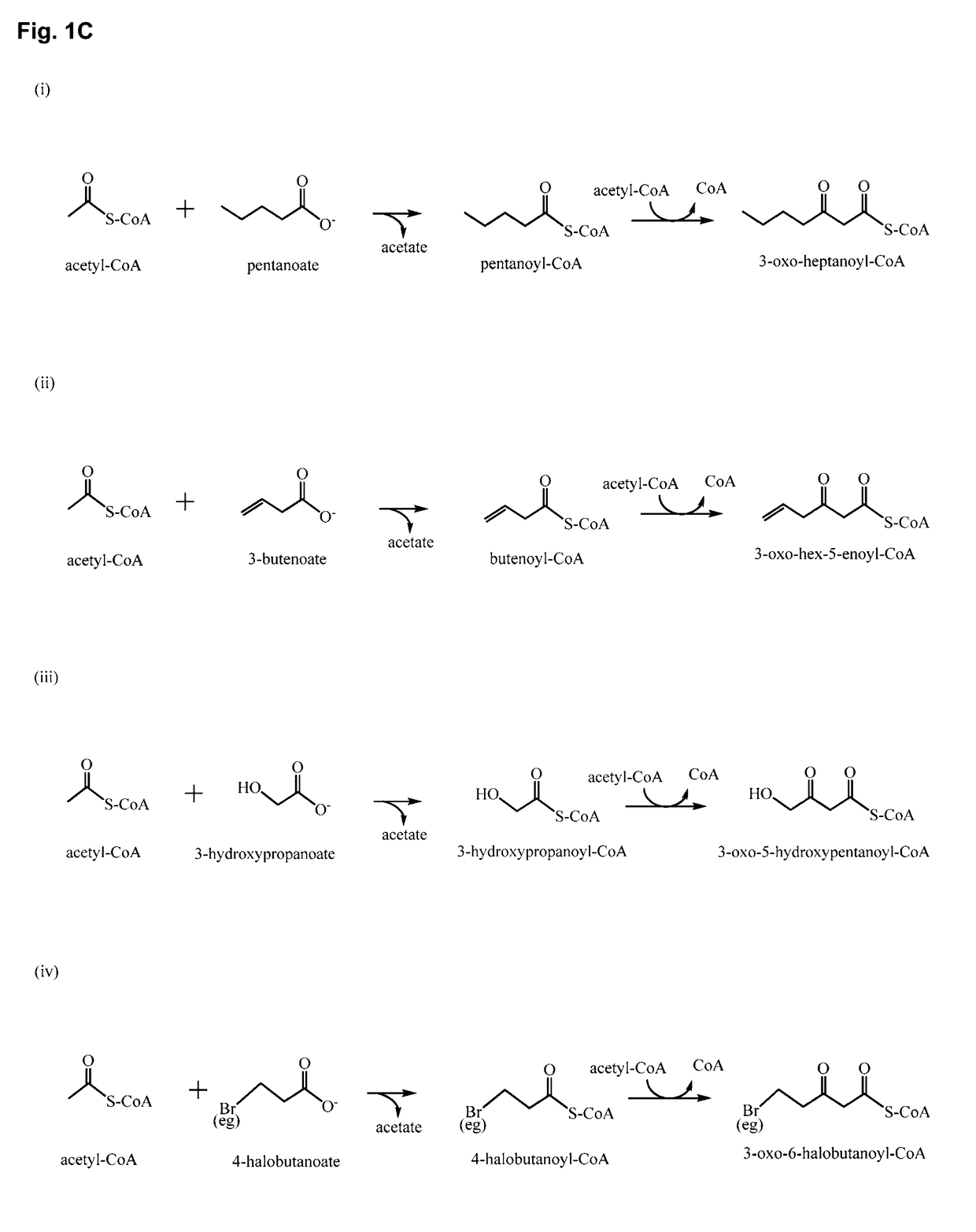Polypeptides for carbon-carbon bond formation and uses thereof
a polypeptide and carbon-carbon bond technology, applied in the field of multifunctional polypeptides, can solve the problems of certain limitations of all known biosynthetic thiolases
- Summary
- Abstract
- Description
- Claims
- Application Information
AI Technical Summary
Benefits of technology
Problems solved by technology
Method used
Image
Examples
example 1
on of YdiF Mutants
[0167]YdiF mutants were prepared using the relevant primers to introduce the mutated bases via the Quick change lightning kit (Agilent, code product: 210518-5), and cloned into E. coli. In addition, all the proteins used in this experiment have the following extra amino acids added in the N-terminal extremity of the original protein sequence (SEQ ID NO:1): MGHHHHHHSSGLVPRGS. Those additional amino acids correspond to: two amino acids (M and G), a 6×His-tag followed by a 3 amino acids linker (SSG), and a specific proteolytic cleavage site (thrombin site, underlined) (SEQ ID NO: 22). All the sequences were confirmed by DNA sequencing.
[0168]From a fresh LB plate containing the desired clone transformant, one colony (or small scratch) was picked to inoculate 25 mL of LB supplemented with the relevant antibiotic and the pre-culture was incubated overnight at 37° C., 230 rpm. The following morning, the TB auto-induced medium (Merck / Code product: 71491-5) was prepared by ...
example 2
ormation Using YdiF or Mutants
[0178]Acetyl-CoA was used at a final concentration of 1.5 mM and 30 mM of the substrate being studied (e.g. carboxylic acid salts, such as sodium acrylate) or 1.5 mM of propionyl-CoA in 50 mM Hepes buffer (pH 7.5). The reaction was started by addition of 0.5 mg / mL of YdiF pure protein or mutants to a final volume of 250 μL and incubated for 1 to 10 hours at 30° C.
[0179]Two controls were made from similar mixture except that the enzymes were inactivated by heating-up at 95° C. for 20 min or they were replaced by Buffer C.
[0180]All samples were prepared in triplicate and spun down at 15000 g for 20 min at 4° C. Detection of the thiol product (e.g. acryloyl-CoA) synthesized from CoA-transferase activity and the keto-thiol product (e.g. 3-oxopent-4-enoyl-CoA) due to putative thiolase activity of YdiF (or homologues) was carried out by Liquid Chromatography coupled to a qTof-Mass spectrometry (in positive mode), using a C18 column (Zorbax Eclipse C18, 2.1×50...
example 3
n of Potential Active Sites
[0182]Mutations were introduced as described in Example 1 at the following positions previously found to be potentially involved in the active site of other β-ketothiolases: C258A, S60A, C112A, S38A, C390A. Activity of the mutant enzymes was studied as described in Example 2. None of the mutations abolished the transferase and thiolase activity of YdiF.
[0183]Mutations were introduced as described in Example 1 to replace the glutamate in position 324 of YdiF (see Selmer et al., 2002) with glycine (mutant E324G) or leucine (E324L). Activity of the mutant enzymes was studied as described in Example 2. Abolition of transferase activity in these mutants showed that the glutamate at position 324 is present in the active site involved in the transferase activity of YdiF. The activity of mutant E324L was only partially abolished in comparison to mutant E324G, possibly due to a steric effect of the glutamate in the active site. Providing the mutant E324G with propi...
PUM
| Property | Measurement | Unit |
|---|---|---|
| Fraction | aaaaa | aaaaa |
| Time | aaaaa | aaaaa |
| Composition | aaaaa | aaaaa |
Abstract
Description
Claims
Application Information
 Login to view more
Login to view more - R&D Engineer
- R&D Manager
- IP Professional
- Industry Leading Data Capabilities
- Powerful AI technology
- Patent DNA Extraction
Browse by: Latest US Patents, China's latest patents, Technical Efficacy Thesaurus, Application Domain, Technology Topic.
© 2024 PatSnap. All rights reserved.Legal|Privacy policy|Modern Slavery Act Transparency Statement|Sitemap



